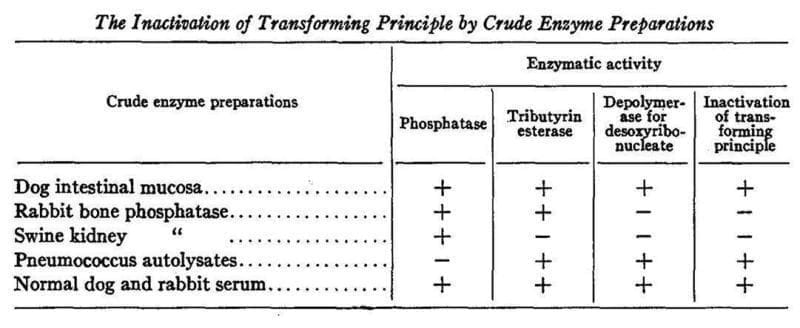One of the most important papers in the history of genetics was basically ignored when it was published in 1944
When Oswald Avery, Colin Macleod and Maclyn McCarty published their paper in 1944 showing unequivocally that DNA was the genetic material, it wasn’t very well received.

But, before we get to THAT paper, we need to go back one paper to set the stage.
In 1928, Fred Griffith published, ‘The Significance of the Pneumococcal Types,’ where-in he identified the ‘rough’ (doesn’t kill mice) and ‘smooth’ (kills mice) types of pneumococcus (a bacterium).
Through a series of experiments he showed that if you inject mice with rough, they live, and with smooth, they die.
If you heat kill smooth and inject that, they live.
These are not surprising results.
But, if you inject mice with both rough and heat killed smooth, they die.
The killed smooth type is able to ‘transform’ the rough type of pneumococcus into the deadly type.
Griffith’s transformation experiments are considered one of the cornerstones of molecular biology, but up until 1944, basically the entire field of biology thought the ‘transforming factor,’ or genetic material, was protein.
So, suffice it to say that when Oswald Avery, Colin Macleod and Maclyn McCarty published their paper in 1944 showing unequivocally that DNA was the genetic material, it wasn’t very well received.
Basically no one cared.
Mostly because everyone thought the genetic material was protein and that Avery and team screwed up their experiments.
Except, they didn’t.
The table above shows an experiment where alcohol purified DNA was exposed to five different crude extracts each with different enzyme activities: phosphatase (degrades RNA, RNase), tributyrin esterase (degrades fats and proteins, protease), depolymerase for desoxyribonucleic acid (degrades DNA, DNase).
In this figure you'll see the last column says 'inactivation of transforming principle' and the only extracts that inactivate the transforming principle are the ones that contain DNase activity.
Purified proteases also failed to inhibit the transforming activity.
But at the time, the genetic material question was deemed to be solved, it was protein, and one of the ring-leaders of the ‘protein is the genetic material’ crew was Linus Pauling.
Pauling is one of the only scientists to receive a Nobel Prize in two different disciplines and is the grandfather of modern structural biology.
He was kind of a big deal.
Pauling himself didn’t believe DNA was the genetic material and instead focused his efforts on studying protein structures.
It was the Hershey-Chase experiment in 1952 that finally convinced him that DNA was the real deal but by that time it was too late.
Watson and Crick, two scientists inspired by Pauling’s work, solved the structure of DNA in 1953 (with help from Rosalind Franklin and others).
But you can't feel too bad for Pauling, he didn't need 3 Nobels anyway.
Read the full issue of Omic.ly Premium 16


